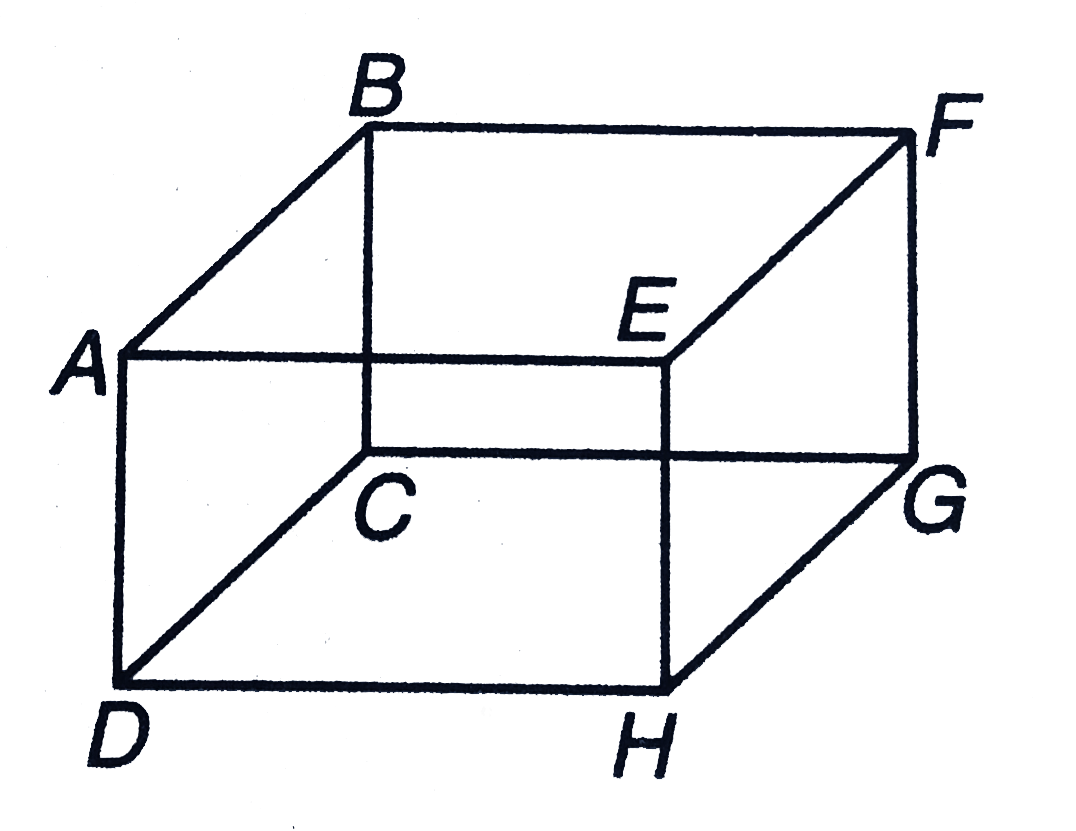The total flux through the faces of the cube with side of length a ,if a charge q is placed at B (mid-point of an edge of the cube), is ϕ, and if a charge q is placed at C (centre of a face of the cube), is ϕ2. Find ϕ2ϕ1.
'(##CEN_KSR_PHY_JEE_C18_E01_018_Q06##)'
The correct Answer is:2
To find the ratio of the electric flux through the faces of a cube when a charge q is placed at different positions, we will analyze the two scenarios:
1. When the charge q is placed at point B (the midpoint of an edge of the cube).
2. When the charge q is placed at point C (the center of a face of the cube).
Step 1: Understanding Electric Flux
Electric flux Φ through a closed surface is given by Gauss's Law:
Φ=qencε0
where qenc is the charge enclosed by the surface and ε0 is the permittivity of free space.
Step 2: Flux when charge q is at point B
- When the charge q is placed at point B (the midpoint of an edge of the cube), it is not enclosed by the cube.
- The charge effectively influences the flux through the cube, but only a fraction of the total flux due to the symmetry of the cube.
- Since the charge is at the midpoint of an edge, it can be considered that the flux through the cube is Φ1=q4ε0.
Step 3: Flux when charge q is at point C
- When the charge q is placed at point C (the center of a face of the cube), the situation changes.
- The charge is effectively enclosed by the cube and contributes to the total flux through the cube.
- The total flux through the cube in this case is Φ2=q2ε0.
Step 4: Finding the ratio Φ2Φ1
- Now we can find the ratio of the two fluxes:
Φ2Φ1=q2ε0q4ε0=q2ε0⋅4ε0q=42=2
Final Result
Thus, the ratio of the electric flux through the faces of the cube when the charge is at point C to when it is at point B is:
Φ2Φ1=2
2. When the charge q is placed at point C (the center of a face of the cube).
Electric flux Φ through a closed surface is given by Gauss's Law:
Φ=qencε0
where qenc is the charge enclosed by the surface and ε0 is the permittivity of free space.
- When the charge q is placed at point B (the midpoint of an edge of the cube), it is not enclosed by the cube.
- The charge effectively influences the flux through the cube, but only a fraction of the total flux due to the symmetry of the cube.
- Since the charge is at the midpoint of an edge, it can be considered that the flux through the cube is Φ1=q4ε0.
- When the charge q is placed at point C (the center of a face of the cube), the situation changes.
- The charge is effectively enclosed by the cube and contributes to the total flux through the cube.
- The total flux through the cube in this case is Φ2=q2ε0.
- Now we can find the ratio of the two fluxes:
Φ2Φ1=q2ε0q4ε0=q2ε0⋅4ε0q=42=2
Thus, the ratio of the electric flux through the faces of the cube when the charge is at point C to when it is at point B is:
Φ2Φ1=2
Topper's Solved these Questions
Similar Questions
The total flux through the faces of the cube with side of length a if a charge q is placed at corner A of the cube is

View SolutionWhat will be the total flux throguh the faces of the cube, Fig with side of length a if a charge q is placed at (a) A : a corner of the cube (b) B : mid-point of an edge of the cube (c ) C : center of a face of the cube (d) D : mid-point of B and C.
View Solution
Knowledge Check
What is the flux link through a cube of side l if a charge 2q is placed at one end of cube ?
Aqε0Bq8ε0C2qε0Dq4ε0The total electric flux through a cube when a charge 8q is placed at one corner of the cube is
Aε0qBε0qCqε0Dq4πε0A charge +q is placed at the mid point of a cube of side L. The electric flux emerging from cube is
Aq∈0Bq6L2∈0C6qL2∈0Dzero
Find the electric flux through each face of a hollow cube of side 10 cm, if a charge of 8.85μC is placed at its centre.
View SolutionIf a point charge q is placed at one corner of a cube, what is the flux linked with the cube?
View SolutionA charge q is placed at point D of the cube. Find the electric flux passing through the EFGH and face AEHD.

View SolutionThe total electric flux through a cube when a charge 8q is placed at one comer of the cube is
View SolutionIf identical charges (−q) are placed at each corner of a cube of side b, then electric potential energy of charge (+q) which is palced at centre of the cube will be
View Solution
